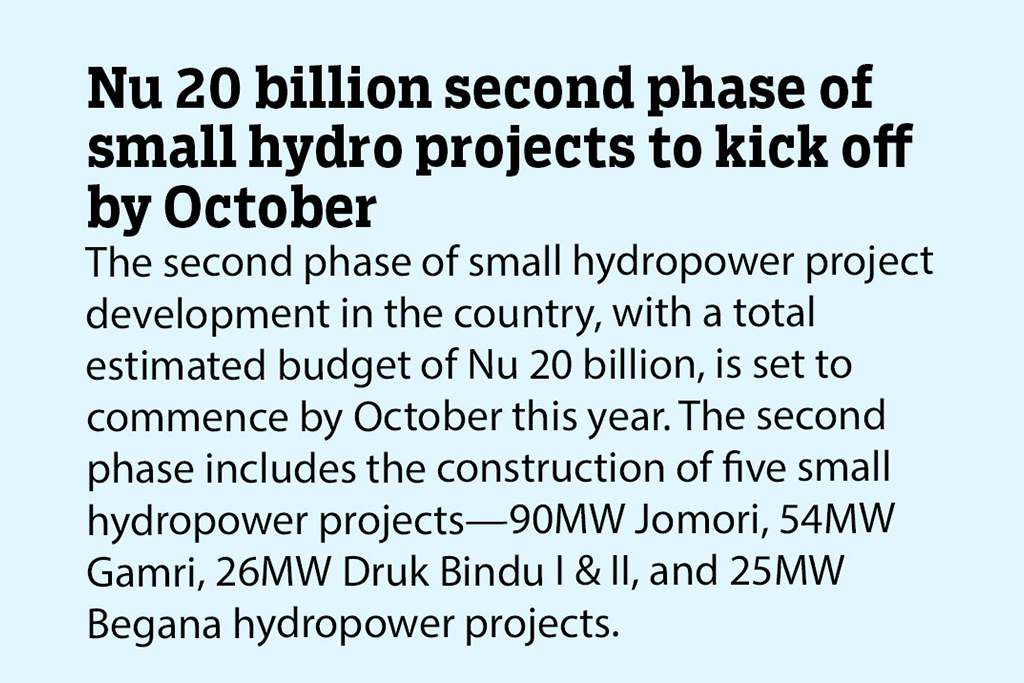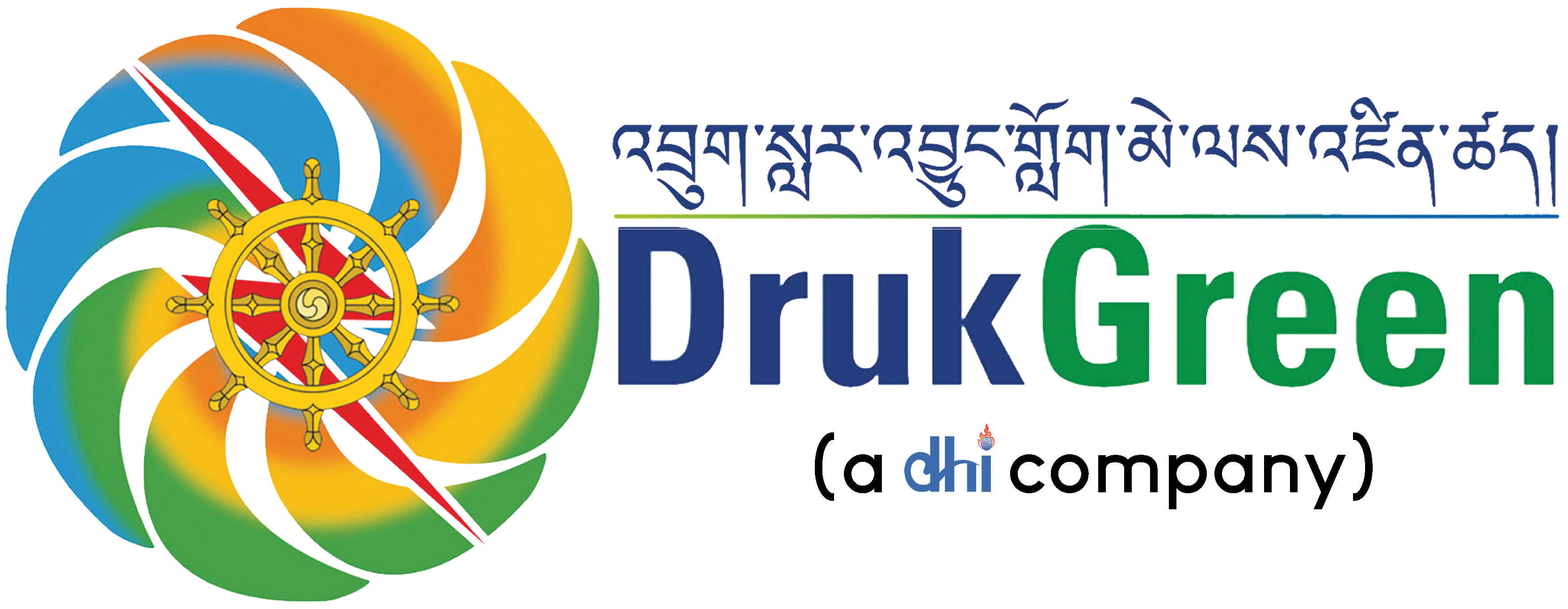
Kuensel | Dechen Dolkar | September 13, 2024
The second phase of small hydropower project development in the country, with a total estimated budget of Nu 20 billion, is set to commence by October this year.
The second phase includes the construction of five small hydropower projects—90MW Jomori, 54MW Gamri, 26MW Druk Bindu I & II, and 25MW Begana hydropower projects.
The construction of access roads for the Jomori and Druk Bindu I & II projects has already begun, ensuring contractors can reach key project components once civil works packages are awarded.
While access roads are essential for Jomori and Druk Bindu I & II, there is no need for major new road construction for the Gamri-I and Begana projects, as existing roads are already available near these sites.
The Druk Green Power Corporation (DGPC) has issued tenders for the civil works associated with the Jomori, Gamri-I, and Druk Bindu I & II projects.
Druk Hydro Energy Ltd (DHyE), a subsidiary of DGPC, is overseeing the implementation of these projects.
An official from DHyE indicated that the evaluation of these contract packages is underway, with awards expected by October 2024. For the Begana project, final clearances from stakeholders are anticipated soon, which will be followed by bidding for the civil works package.
“Once the civil works contracts are in place, we will proceed with bids for the electro-mechanical and hydro-mechanical components,” the official added.
The Jomori project’s road construction has been awarded to two contractors, while a single contractor will manage the Druk Bindu I & II roads.
The main civil works contracts are still pending. The selection of the contractor will be made once bid evaluations are complete.
In the first phase of the projects, contractors with experience in hydropower and related works were shortlisted and awarded contracts through a competitive bidding process.
The official said that for the second phase, given the increased capacity and complexity of the larger projects, some hydropower construction experience is required.
However, for the smaller projects, the requirements are focused on general civil works experience, without the need for prior hydropower construction expertise.
“This opens the field for more contractors to become eligible for future hydropower projects by building their capacities,” the DHyE official said.
Although these projects are labelled ‘small’ with the largest at 90MW, they are significant for Bhutan’s energy sector, added the official.
The civil works packages are only open to domestic contractors. This is mainly to build the capacity of domestic contractors for large-scale projects in the future.
Efforts are also underway to strengthen domestic capacity in designing, manufacturing, erecting, and commissioning hydro-mechanical equipment.
When asked about measures to ensure the projects remain on schedule, the DHyE official said that while the installed capacities are relatively small, the Detailed Project Reports are comprehensive to minimise unforeseen challenges during construction.
“Realistic timelines have been set for the construction of each project, and management teams on-site are encouraged to make timely decisions, supported by a full team overseeing the projects,” the official said.
For small hydropower and solar projects, the government has almost secured financing from commercial loans from Indian banks, the European Investment Bank, OPEC Fund, Japan International Cooperation Agency, and the Asian Development Bank, among others.
In the 13th Plan, the government will initiate 10 large hydropower projects, which include 404 MW Nyera Amari, 600 MW Kholongchhu, 1,125 MW Dorjilung, 180 MW Bunakha, 900 MW Wangchhu, 363 MW Khomachhu, 170 MW Dangchhu, 770 MW Chamkharchhu-I, 2,585 MW/4,060 MW Sankosh, and 2,800 MW Kuri-Gongri.
